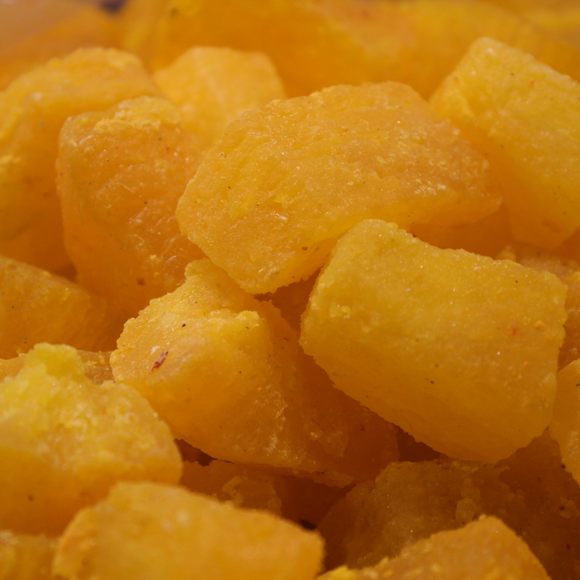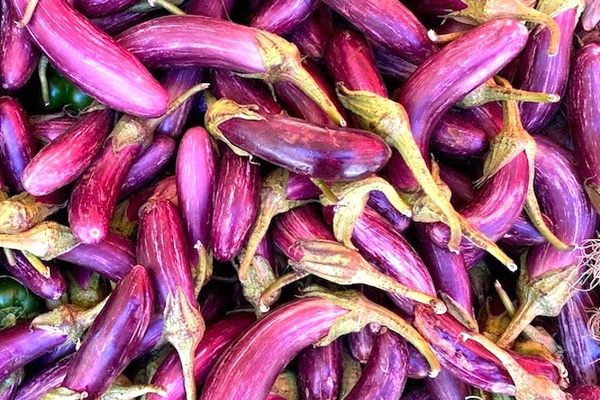In Agra, the North Indian city that was once the capital of the mighty Mughal Empire, there are two kinds of jewels. First, there are the semi-precious stones that adorn the Taj Mahal: jade, onyx, and lapis lazuli forming the petals of glowing inlaid flowers climbing up the snow-white monument’s marble surface. Then, there’s an edible treasure: The luminous, translucent jewels of Agra ka petha, glowing green, saffron, and white from behind candy-counter glass.
Made of a candied local gourd, petha is said to have been invented by the ever-creative chefs of the Mughal royal court. Today, it’s the signature sweet of North India’s signature tourist town, but it’s also seen its fair share of controversy, as local producers and the government face off over pollution standards.
Petha is made from the ash gourd (also known as the white pumpkin), a crop with pale-green skin and white, heavily-seeded, savory flesh. Candy makers cut the gourd into bite-size chunks and then cure it in a solution of lime (not the citrus; this is white calcium hydroxide) for a few hours. After draining the gourd pieces from the lime solution, they boil them until tender, finally soaking them in a flavored syrup. The resulting candy has a chewy, crystallized texture with an almost wet, sticky inside and a sugar-crisp exterior. Agra’s sweet makers have been known to get creative with the flavoring, and candy counters in the city are rainbows of brightly-dyed petha flavored with everything from paan to rose.
Agra was the seat of the mighty Mughal Empire under Shah Jahan, the king who commissioned the Taj Mahal in 1631 in honor of his wife Mumtaz, who died while bearing the couple’s 14th child. Shah Jahan’s culinary tastes were legendarily sophisticated, and his royal chefs are attributed with creating some of North India’s richest dishes and most inventive sweets, including Agra ka petha. As the story goes, Shah Jahan ordered his chefs to create a treat that would be as pure as the Taj itself, and petha was the result.
Today, the battle of the pethas is ongoing in Agra, where countless small manufacturers turn out versions of the sweet to feed the flow of tourists that come every year to see the Taj. The city’s signature candy became a source of controversy in 2014, when the government declared an 80-kilometer (50-mile) radius around the Taj Mahal the “Taj Trapezium Zone,” and banned the use of coal-powered manufacturing. The law was meant to protect the white marble of the Taj, which easily becomes grimy from air pollution, but local petha manufacturers, may of whom use coal to boil their sugar syrup, protested that the law hurt their businesses. “Petha is being made in the same old style since decades,” one small-scale petha manufacturer told the Times of India. “This shows that the Taj is not turning black because of us. Still, it is only the poor who are being targeted.” The conflict is ongoing, with petha manufacturers abandoning the Noori Darwaza locality that was their traditional home.
Regardless of the controversy, visitors to Agra can continue to find the treat overflowing in glowing rows in the sweetshops on the busy tourist drag leading up to the Taj’s entrance. Feel free to indulge, but know that petha is not a sweet for the faint of heart. So sugary two bites can make your teeth hurt, Agra ka petha may be made by humble local producers, but it’s a sweet fit for a queen.
Written By
 Reina Gattuso
Reina Gattuso

















